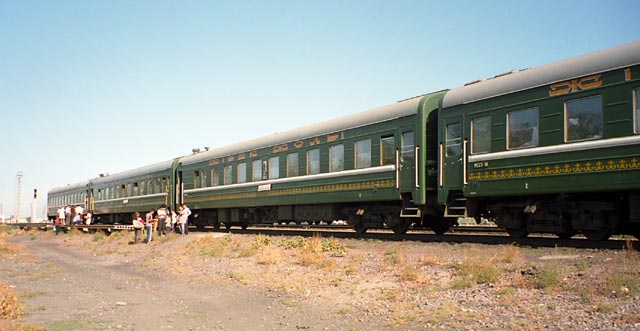The recent announcement of a Brazil-backed agreement between Turkey and Iran, regarding the latter's nuclear program has somehow driven attention away from the sharp deterioration of diplomatic relations between Russia and Iran. Judging by unfriendly official statements, the Russo-Iranian partnership did not survived Moscow's stauncher stance on the Iranian nuclear issue. Not limiting its reaction to mere words, Tehran has taken steps to improve its relationship with Georgia.
Russia's exasperation with Tehran is rooted in the latter's evident lack of goodwill on the nuclear issue. Indeed, Iran agreed to send its uranium abroad, only to withdraw its offer some days after and announce in parallel that it would proceed with enrichment to a higher degree, that was getting Tehran closer from mastering military nuclear process. Finally, active muscle-flexing from Tehran in the last months (war-games in the Gulf and repeated announcements about state-of-the-art weaponry entering service) did little to convince Moscow that Tehran's views are non-aggressive.
Moscow's concerns have been sensible for some time now. Over the past few months, Russia has been accused by Iran of delaying the entry into service of the nuclear plant in Bushehr (built by Rosatom) and of holding up the delivery of S-300 anti-aircraft systems.
Political U-turn or logical realignment?
One could assume that Moscow's new stance is the result of US concessions, of Medvedev's new attitude towards the West or simply of Russia's growing concern of Iran going nuclear. Whatever has triggered Moscow's change of attitude towards Iran, on thing is sure: given the numerous potential conflict points between Russia and Iran, their so-far rather good relationship was more a pragmatic alliance rather than a long-term strategic commitment.
Russia and Persia (whose Iran is somehow the heir) have a long story of rivalry and war, especially in the Caucasus (a fight that the Russians had largely won by the end of the XIXth century). Later on, Persia was placed in the spheres of influence of England and Russia (which was eventually replaced by the soviet union), and even occupied by Allied and Soviet forces during World War II. Finaly, the Islamic Revolution and its message of revolt to Muslims worldwide did not make Iran more friendly in the eyes of the Soviets, worried by the spread of sedition in their Muslim territories and already fighting an Islamic insurgency in neighbouring Afghanistan.
British caricature of the XIXth century, showing the Russian bear subjugating Persia.
Following the collapse of the USSR, Iran sought to break its encirclement by increasing its influence in countries of the former Soviet Union. This policy is still a reality, and Iran has been developing partnerships on various levels with several countries of Central Asia and the Caucasus. It is no wonder then that Moscow sees with apprehension this intrusion of a new rival in what it still considers as its backyard. Especially when this rival has money (thanks to its soil's energy resources), and assets such as cultural, historical and linguistic proximity with these regions. Tensions are not limited to the Caucasus: indeed, Iran and Russia still have to agree on a legal status for the Caspian Sea, which would determine the way the seabed is shared.
Iran is fully aware of these dissensions with Russia. Hence, it has developed partnerships with China, a critical actor of the new "Great Game" and a relevant challenger to Russia influence in Central Asia. Iran today supplies China with part of the energy resources vital to its economic development, while China has already transferred sensitive military technologies to Iran (mainly in the field of ballistic, anti-ship and anti-air missiles).
From rivalry to conflict?
Despite real tensions between the two countries, it is unlikely that either of the two will push the confrontation to a superior level, whether this takes the form of direct armed conflict or proxy-wars. First of all, both Tehran and Moscow have common interest (the first of them being chasing NATO from Central Asia) and important contracts in the military and nuclear sector underway. But both States are also mutually deterred from taking too harsh measures against one another by what equates to a balance of terror.
Iran could, if needed, seriously destabilize the Caucasus, and particularly Russian-controlled parts of the region. The Pasdarans (Islamic Revolution Guard Corps) have accumulated extensive experience in the field of irregular warfare through support for Hezbollah, today one of the most proficient guerilla movements in the world. Indeed, Hezbollah's "know-how" in fields such as ambush tactics, handling of antitank weapons , assembly of IEDs and construction of underground shelters and bunkers could easily be used by Caucasian insurgents evolving in a mountainous environment suitable for guerilla tactics.
Such a move from Iran is however unlikely, given the fact that Russia would, in these event, retain tremendous retaliation capabilities on Iranian assets. And the way Mikhail Saakachvili's 2008 military adventure ended says more than a long speech on Moscow's determination not to let unpunished this kind of provocation...











